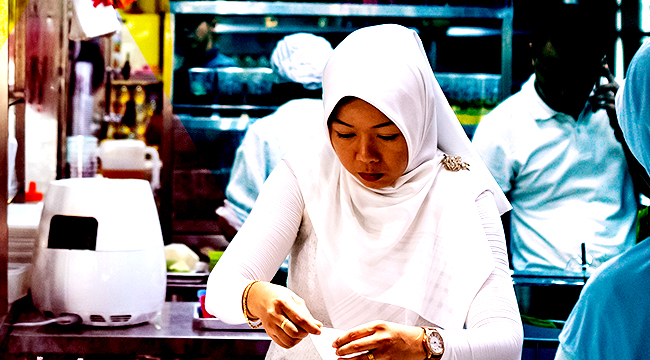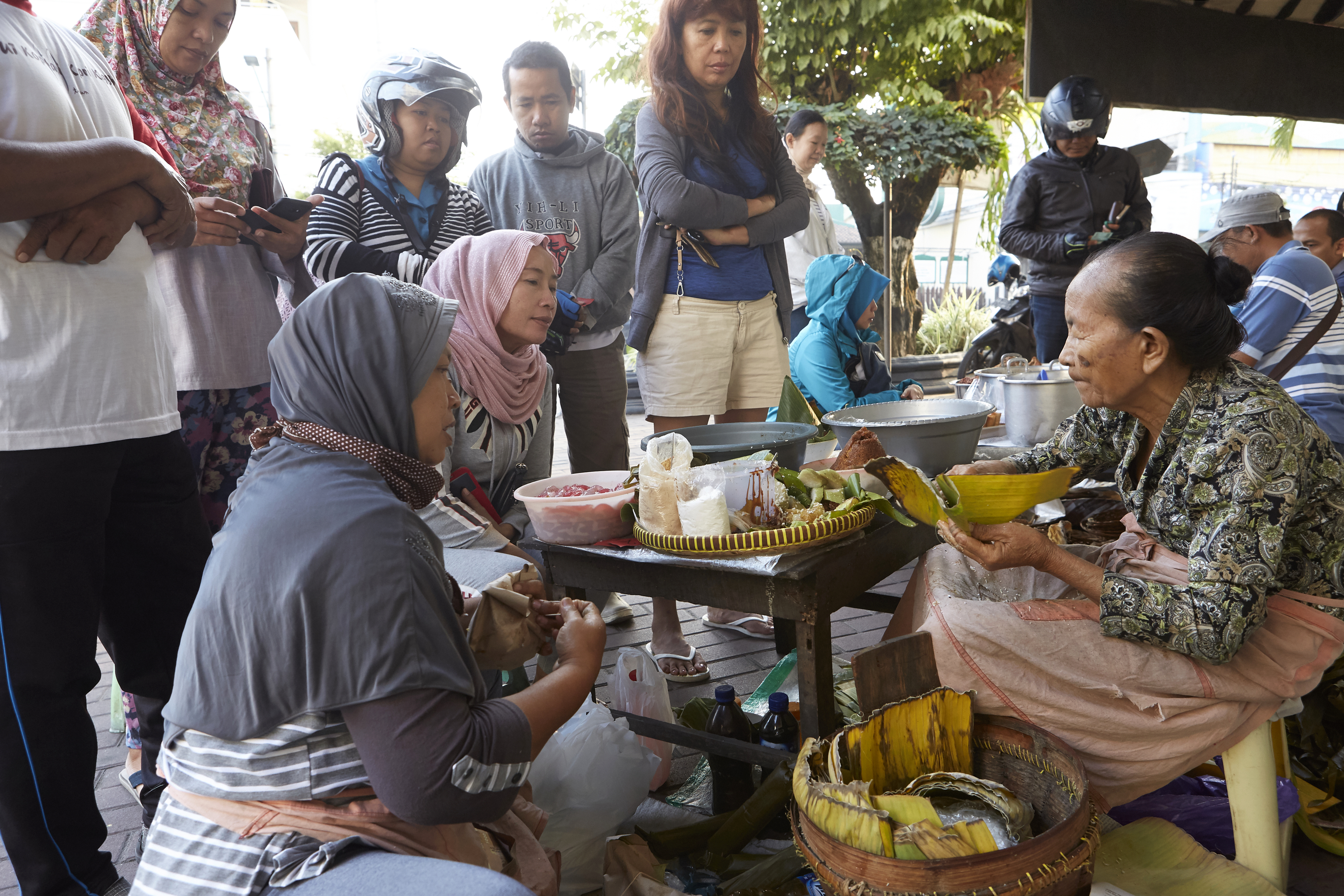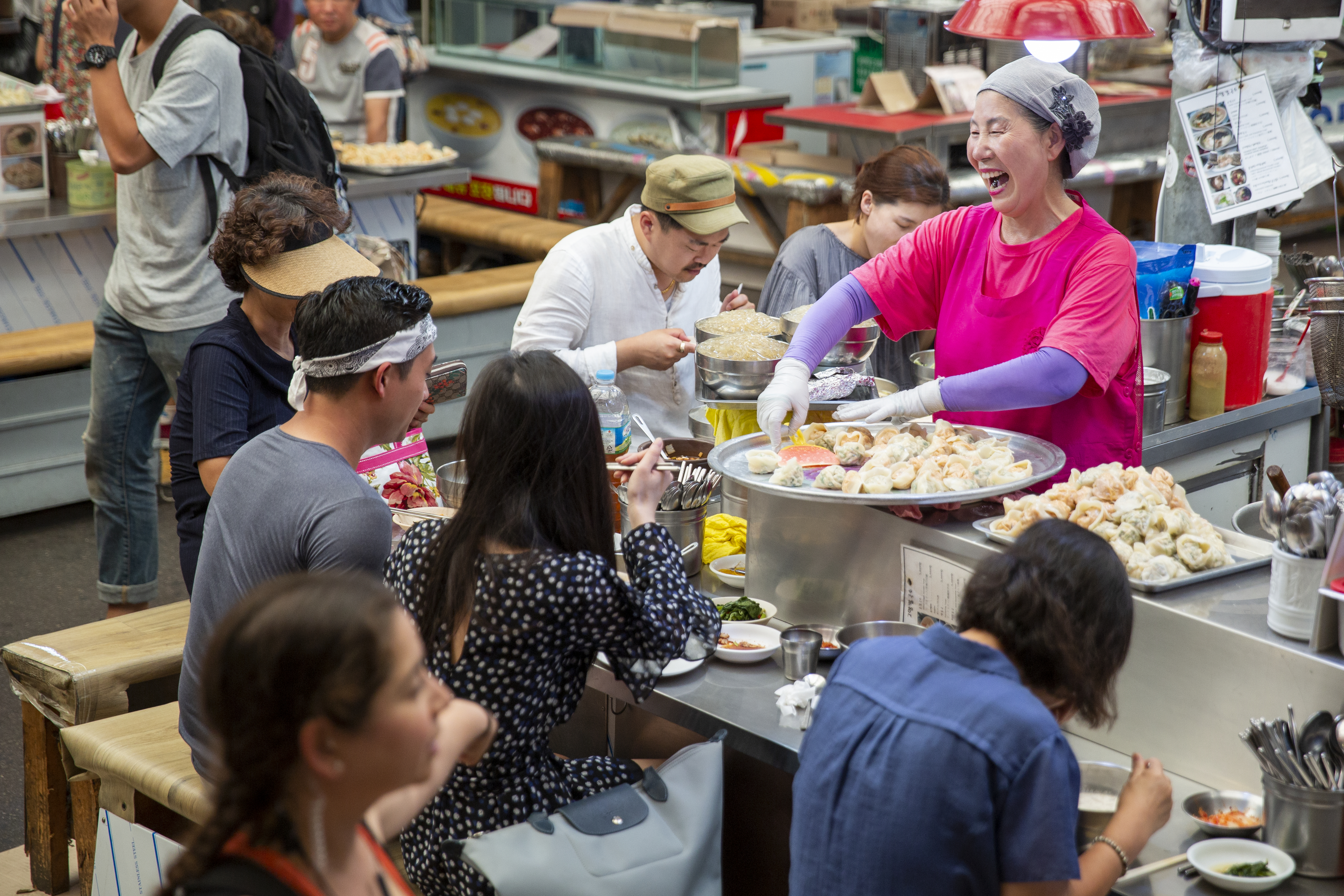
Netflix’s new food series, Street Food, brings to mind a classic meme. It’s as if David Gelb and the team behind the now iconic Chef’s Table heard the criticism of that show — that it’s overwrought, that the food is inaccessible, that it features a decidedly western gaze, etc. — and said, “hold my beer.” They then proceeded to create something with a similar visual style that is as accessible as it gets, well-versed in the cultures it chooses to celebrate, and ditches all pretension at the door. It’s that rare “hold my beer” scenario that worked out swimmingly.
In a sense, Street Food doubles down on the qualities that made us fall in love with its mother series. Visually, the two are nearly identical, but the subject matter couldn’t be more different. The often cloistered world of haute cuisine is jettisoned for the very open doors of street food across Asia. There’s still an episode-long focus on a single culinary mind, but Street Food makes more room for the local food scene to come into play, with far fewer “mad culinary genius” moments. At its heart, the show explores how and why some people end up slinging noodles or sweets or rice on the street, and the answers aren’t always easy.
The biggest change to the format here is the run time. Each episode is only 30 minutes long, or about 15 to 20 minutes shorter than Chef’s Table. This gives the show a laser focus that never allows the story to drift. Yes, each episode features a single chef prominently, but there’s no time for them to walk through a field of sun-soaked wheat in slow motion. My guess would be that the cooks featured on Street Food live lives that don’t leave time for that sort of bullshit. After all, any show about the global tradition of street food must, at its heart, be about utility and necessity.
For the most part, the restaurants on Chef’s Table are where rich people go to be entertained. The hawker stalls and carts on Street Food are where people go to be fed — quickly and inexpensively.

Where the show shines brightest is in its ability to highlight people who don’t fit into any preconceived notion of what a “great chef” is. The show predominantly features middle-aged to elderly women with little to no disposable income. A profile of their lives away from the wok or grill is often enlightening and always illuminating, but it can be harrowing too. There’s a sense of how circumstances come to define us percolating under the surface of Street Food that, honestly, can get hard to watch. This isn’t molecular gastronomy created by someone who lives a life of privilege (for better or worse). There’s real struggle in these folks’ lives.
Each episode of Street Food reveals how one chef overcame obstacles (often poverty and a patriarchal society) to become an icon of their neighborhood via cooking. You also get a sense that this life isn’t easy, even when you “make it,” as the show deftly navigates the question of what it means to be a success in a world where you need to serve 200 plates a day to thrive. There’s no show of wealth or recognition here. No mega-kitchens built out to make room for experimentation. Just the occasional plaque from the city or, on occasion, Michelin.
It sounds trite, but the real prize for these cooks seems to be the satisfaction of cooking the same dish for 12 hours straight, simply to put a smile on any face that happens by. There’s a beauty to that ethos that makes Street Food very bingeable. You end up sighing at the difficult realities of the featured chefs’ lives but unable to stop watching the gorgeous food they create on the spot, over and over again. The show walks a fine line — never veering into poverty porn and eschewing the western (read: wealthy, colonial) gaze by being brutally honest about what street food is to the people preparing it and eating it.

Taken as a whole season, Street Food feels even more experiential than even Chef’s Table. Viewer investment levels are high and each episode — whether in Indonesia, Singapore, Philippines, or Thailand — feels easy to re-create for the intrepid traveler. If you have the cash or the miles, you can get on a plane and go stand in line for every single one of these dishes right now. No gatekeepers. No years-long reservation lists.
As the last frames of the nine episodes flicker past, you’re left appreciating the food highlighted in the series but also feeling… somehow… comforted. Though much of this comfort probably comes from visuals of rich broth and silky noodles, part of it comes from the absence of fear. This show, full of laughter, passion, and a fair bit of pain reflects the referendum laid down by Anthony Bourdain — to travel and explore the world and its flavors fearlessly and with compassion for the people whose lives you are (whether via this show or in person) an interloper in.
Street Food dares you to open your mind to the simple and sublime in life through the most accessible and utilitarian food in the world. On that level, it’s an unmitigated success.
Street Food drops on April 26th on Netflix. Season one highlights Bangkok (Thailand), Osaka (Japan), Delhi (India), Yogyakarta (Indonesia), Chiayi (Taiwan), Seoul (South Korea), Ho Chi Minh City (Vietnam), Singapore, and Cebu (Philippines).







